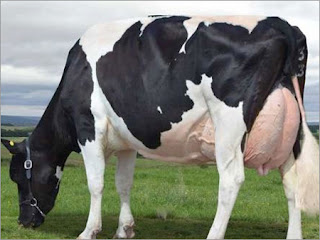TRANSGENIC COW
What is a transgenic cow?
Transgenic cows are genetically modified (GM) cows. They have an extra gene or genes inserted into their DNA. The extra gene may come from the same species or from a differentspecies.
Transgenic cows produce proteins in their milk
The extra gene (transgene) is present in every cell in the transgenic cow. However, it’s onlyexpressed in mammary tissue. This means that the transgene’s protein will only be found in the cow’s milk and can only be extracted from there.Since 2000, scientists at AgResearch have been successfully producing transgenic cows that make modified milk or produce therapeutic proteins to treat human diseases.
Techniques used to make transgenic cows
Making a transgenic cow is a multi-step process.First, the gene for the desired product is identified and sequenced. Then a gene construct containing this desired gene is created using DNA cloning, restriction enzyme digests andligation.
The gene construct is then introduced into female bovine (cow) cells by transfection. Transgenic bovine cells are selected and fused with bovine oocytes that have had all of theirchromosomes removed. Once fused with the oocyte, the transgenic cell’s chromosomes are reprogrammed to direct development into an embryo, which can be implanted into a recipientcow. After a 9-month gestation period, a female calf is born. She will only express the transgene in her milk during lactation after her first calf is born. This is because expression of the transgene is controlled by a promoter specific to lactating mammary cells.
This article gives further information on the techniques used to make transgenic cows.
Transgenic cows on the farm
Transgenic herds live on special farms with their own milking sheds. They are kept separate from regular herds. Transgenic cows look identical to normal cows. Researchers use ear tags and microchips to identify transgenic cows and their calves.One of the aims of the research programme is to show that transgenic cows pass on their transgenes to subsequent generations. If a transgenic cow is mated with a transgenic bull, she will have a higher chance of having transgenic offspring. However, if a transgenic cow is mated with a non-transgenic bull, her offspring will have a 50% chance of being transgenic, as offspring inherit half of their chromosomes from their mother and half from their father.





No comments:
Post a Comment